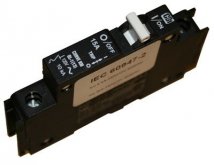I've had my system installed for over 10 years and when I went to make some changes on the AC side I discovered many of the copper stranded wires were now loose in the breaker. The AC out from the inverter even fell out after touching it. So check the tightness/torque if it's been a while! Image below is the type I have.




